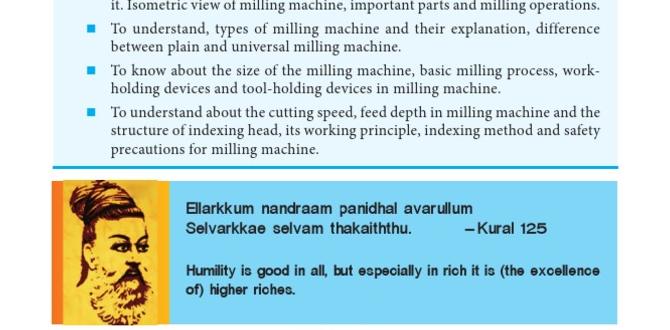Don’t let PVC give you a headache! A 1/8 inch carbide end mill, especially one with an 8mm shank and MQL-friendly design, is your secret weapon for clean, fast, and precise PVC milling. This guide shows you exactly why and how to use it.
Working with plastics like PVC can sometimes feel tricky. You want smooth cuts, no melting, and edges that look clean. Often, beginners struggle with heat build-up, chipped edges, or a cutter that just doesn’t seem to want to cooperate. This can be really frustrating when you’re trying to create something intricate or just get a simple job done. But don’t worry, there’s a straightforward solution that makes a world of difference. It all comes down to choosing the right cutting tool. In this article, we’ll dive deep into why a specific type of cutter – the 1/8 inch carbide end mill – is a game-changer for PVC, and I’ll walk you through everything you need to know to use it like a pro.
Why a 1/8 Inch Carbide End Mill is Perfect for PVC
When it comes to milling PVC, the material’s properties really call for a specific type of tool. PVC, or polyvinyl chloride, is a common plastic that’s relatively soft but can also be prone to melting if you’re not careful. This is where the design and material of your end mill become super important.
Understanding the Material: PVC
PVC is a widely used polymer found in everything from pipes and window frames to electrical insulation and even some signage. It’s popular because it’s durable, chemical-resistant, and relatively inexpensive. However, when you’re machining it, its thermal conductivity is quite low. This means it doesn’t dissipate heat very well. If your cutting tool generates too much heat, the PVC can start to melt. This melted plastic can then gum up your cutter, leading to poor surface finish, potential tool breakage, or even damage to your workpiece.
Carbide: The Secret Ingredient
Carbide, specifically tungsten carbide, is a ceramic-metal composite known for its extreme hardness and resistance to heat. Unlike High-Speed Steel (HSS) tools, carbide cutters can maintain their cutting edge at much higher temperatures. This is crucial for plastics like PVC where heat generation is a significant concern.
For PVC milling, carbide offers several advantages:
- Heat Resistance: Carbide handles the heat generated during cutting much better than HSS, significantly reducing the risk of melting.
- Hardness: Its superior hardness means it stays sharp longer, providing consistent results and fewer tool changes.
- Chipping Resistance: While brittle, carbide is engineered to be strong. With the right rake angles and cutting parameters, it excels at cleanly shearing plastic.
The 1/8 Inch Size Advantage
The 1/8 inch (approximately 3.175mm) diameter is an excellent size for several reasons when milling PVC:
- Detail Work: This small diameter allows for intricate designs and fine details. It’s perfect for creating small lettering, sharp corners, or complex patterns in PVC sheets or parts.
- Manageable Chip Load: A smaller diameter means a smaller flute volume. This helps in managing the chip load – the amount of material removed by each tooth of the cutter per revolution. For soft plastics like PVC, a smaller chip load is generally better to avoid overloading the cutter and generating excessive heat.
- Versatility: While great for detail, a 1/8 inch end mill is also versatile enough for general milling tasks on smaller PVC projects or components.
The 8mm Shank: A Secure Fit
While 1/8 inch refers to the cutting diameter, the shank is the part of the tool that gets held in your milling machine’s collet or tool holder. An 8mm shank is a very common size in many milling setups, especially on smaller desktop CNC machines or even some manual mills. Having a standard shank size ensures compatibility. A larger shank diameter (like 8mm) relative to the cutting diameter (1/8 inch) also provides more rigidity and stability, reducing vibration and improving cut quality. This is especially important for precise work.
You’ll often see tools advertised with both metric and imperial equivalents. A 1/8 inch end mill is very close to an 8mm shank tool. For example, a 3.175mm (1/8 inch) cutter with an 8mm shank is a common configuration.
MQL-Friendly Design: Keeping Things Cool
MQL stands for Minimum Quantity Lubrication. This is a system that delivers a very small amount of high-pressure coolant or lubricant directly to the cutting zone. For PVC milling, MQL is incredibly beneficial for several key reasons:
- Heat Management: The primary benefit is improved cooling. The fine mist of lubricant helps to wash away heat and chips, preventing melting and improving tool life.
- Chip Evacuation: The lubricant also aids in flushing chips away from the cutting area, preventing them from packing into the flutes and causing issues.
- Surface Finish: MQL can lead to a much smoother surface finish on plastics by reducing friction and preventing material buildup on the tool.
- Reduced Mess: Compared to flood coolant, MQL uses a fraction of the fluid, making cleanup much easier and reducing environmental impact.
An “MQL-friendly” end mill usually refers to a tool designed to work well with this system. This might include specific flute geometries or coatings that help the lubricant reach the cutting edge effectively. For PVC, this feature can significantly enhance your milling experience.
Choosing the Right 1/8 Inch 2-Flute Carbide End Mill
For milling plastics like PVC, a 2-flute end mill is generally preferred over a 4-flute. Let’s break down why.
Number of Flutes: 2 vs. 4
- 2-Flute End Mills: These are ideal for milling plastics and softer materials. The two flutes provide ample space for chip evacuation, which is critical for preventing melting and clogging in PVC. They also allow for more aggressive feed rates compared to 4-flute tools, as there’s more “open space” for chips to escape.
- 4-Flute End Mills: These are typically used for finishing in metals or for roughing in harder materials. In plastics, 4 flutes can sometimes lead to poorer chip evacuation and increased heat generation because the flutes become more packed with material.
Therefore, for PVC milling with a 1/8 inch carbide end mill, a 2-flute design is usually the best choice for optimal performance and chip management.
Material and Coating
As discussed, tungsten carbide is the material of choice. You’ll commonly find end mills made from solid carbide. Coatings aren’t always necessary for PVC, but some coatings can offer additional benefits:
- Uncoated: Perfectly suitable for PVC and often the most economical choice.
- ZrN (Zirconium Nitride): A golden-colored coating that offers good lubricity and some heat resistance, which can be beneficial for plastics.
- TiAlN (Titanium Aluminum Nitride): Primarily for high-temperature metal applications, less commonly needed for PVC but can provide wear resistance.
For general PVC milling with a 1/8 inch end mill, an uncoated solid carbide tool is an excellent starting point.
Types of 1/8 Inch Carbide End Mills for PVC
When looking for this tool, you’ll encounter a few common types, all suitable for PVC to some extent, but some are optimized:
Here’s a quick look at common end mill end types:
| End Mill Type | Description | Suitability for PVC |
|---|---|---|
| Standard Flat End Mill | Has flat cutting edges on the end. | Good general-purpose choice. Good for through cuts and profiling. |
| Ball End Mill | Has a rounded cutting edge on the end, forming a hemisphere. | Excellent for creating curved surfaces, 3D carvings, and radiused internal corners. |
| Corner Radius End Mill | A flat end mill with a small radius on the cutting edges. | Helps to prevent stress concentration at sharp internal corners, making them stronger and less prone to chipping. Good for profiling where sharp corners aren’t critical. |
For PVC, a standard flat end mill is often sufficient. If you need to create radiused corners or fillets, a corner radius end mill can be useful. A ball end mill is great for complex 3D sculpting.
Where to Find Them
You can find these specialized end mills at:
- Online CNC supply stores
- Large industrial tool suppliers
- Specialty machining equipment retailers
- Marketplaces like Amazon or eBay (exercise caution and check reviews for quality)
When searching, use terms like: “1/8 inch carbide end mill,” “3mm carbide end mill,” “2 flute carbide end mill PVC,” and “8mm shank end mill.”
Setting Up Your Milling Operation
Once you have your 1/8 inch carbide end mill, the next step is to set it up correctly in your milling machine. This involves ensuring the tool is held securely and that your machine is configured for optimal cutting.
Collets and Tool Holders
The shank size of your end mill (in this case, 8mm) dictates the collet or tool holder you’ll need. Ensure you have an accurate collet that fits the 8mm shank tightly. For CNC machines, this is typically done using a R8 collet (for small manual mills) or a specific collet chuck (for ER series collets commonly used on CNCs that can hold 8mm shanks).
Key points for tool holding:
- Cleanliness: Always ensure the collet and the end mill shank are perfectly clean and free of any debris or oil.
- Tight Fit: The collet must grip the shank firmly and concentrically. A loose tool can lead to vibration, poor cut quality, and can be very dangerous.
- Correct Collet Size: Use a collet that matches the shank diameter (8mm) for the most secure grip.
Spindle Speed (RPM) and Feed Rate
These two parameters are critical for successful PVC milling and are closely related to preventing melting. There’s no single perfect setting, as it depends on your specific machine, the type of PVC, and the depth of cut. However, here are general guidelines for a 1/8 inch (3.175mm) 2-flute carbide end mill on PVC:
Spindle Speed (RPM)
For PVC, you generally want a relatively high spindle speed. This allows the tool to cut rather than rub, minimizing heat buildup. A good starting point is often between 12,000 and 24,000 RPM. Lower RPMs can lead to melting and poor chip formation.
Feed Rate
The feed rate is how fast the cutting tool moves through the material. For PVC, you want a feed rate that’s fast enough to create a ‘chip’ rather than ‘dust’ or melted plastic, but not so fast that you overload the tool or machine.
A good starting point for chip load (material removed per tooth per revolution) on PVC with a 2-flute end mill is around 0.0015 to 0.003 inches per tooth (0.03 to 0.07 mm per tooth).
To calculate the feed rate (in inches per minute, IPM):
Feed Rate (IPM) = Spindle Speed (RPM) × Number of Flutes × Chip Load (inches/tooth)
Example:
- Spindle Speed: 18,000 RPM
- Number of Flutes: 2
- Chip Load: 0.002 inches/tooth
- Feed Rate = 18,000 × 2 × 0.002 = 72 IPM
In metric:
Feed Rate (mm/min) = Spindle Speed (RPM) × Number of Flutes × Chip Load (mm/tooth)
Example:
- Spindle Speed: 18,000 RPM
- Number of Flutes: 2
- Chip Load: 0.05 mm/tooth
- Feed Rate = 18,000 × 2 × 0.05 = 1800 mm/min
Depth of Cut
For plastics like PVC, it’s best to use smaller depths of cut. This allows the tool to cut cleanly without excessive force or heat generation.
- Step-over (for profiling): For full slotting, you’re cutting the full diameter. For pocketing or profiling around a shape, consider a step-over of 20-50% of the tool diameter.
- Depth of cut (per pass): Start conservatively. For a 1/8 inch end mill clearing pockets, a depth of cut of 0.0625 inches (1.5mm) to 0.125 inches (3mm) is a good starting point. You can often increase this if the machine and cooling are sufficient.
You can find more detailed recommendations from resources like the National Center for Atmospheric Research (NCAR) on cutting tool basics, though specific PVC parameters will vary.
Lubrication and Cooling (MQL)
This is where the “MQL-friendly” aspect comes into play. If you have an MQL system integrated with your CNC, make sure it’s set up to deliver a fine mist directly to the cutting zone. This is critical for:
- Reducing friction and heat
- Preventing plastic from melting and sticking to the cutter
- Flushing chips away from the flutes
If you don’t have an MQL system, you can manually apply a plastic-friendly cutting fluid or spray a suitable lubricant (like isopropyl alcohol or a specialized plastic cutting fluid) with a spray bottle. However, MQL provides the most consistent and effective cooling.
Step-by-Step PVC Milling Process
Let’s walk through how to mill PVC using your 1/8 inch carbide end mill. This guide assumes you have your workpiece secured and your tool mounted.
1. Secure Your Workpiece
Ensure your PVC sheet or part is firmly clamped to your machine’s bed. Use clamps, double-sided tape, or a vacuum table. Make sure the PVC won’t shift during the milling process. If you’re using a CNC, ensure your work holding is adequate to resist the cutting forces.
2. Set Your Zero Point (Origin)
Using your CNC machine’s jogging controls or your manual mill’s indicators, set your X, Y, and Z zero points. The Z-zero is typically set to the top surface of your PVC workpiece. Precision here prevents cutting too deep or not deep enough.
3. Load Your Toolpath
If you’re using a CNC, load your G-code file into your control software. Double-check the tool information (diameter, type) matches your setup. If you’re doing manual milling, you’ll be controlling the movement directly.
4. Prepare Your Cooling/Lubrication
Turn on your MQL system or have your spray bottle of lubricant ready. You want it to start spraying just before the cutter engages the material and continue throughout the cut.
5. Engage the Spindle
Start your spindle at the desired RPM. For PVC, this is typically in the higher range (12,000-24,000 RPM).
6. Perform the First Plunge/Engage
Slowly plunge the end mill into the PVC to the desired depth. If you’re routing pockets or slots, you can often plunge directly. For profiling cuts around the outside of a part, you might want to start the cut on an existing edge or ramp into the material. A controlled plunge or ramp is key to avoid shock loading the tool and breaking it.
Tip: If you’re unsure about plunging, an especially effective technique for pocketing is to use a helical ramping motion. This means the cutter spirals into the material, reducing heat and stress.
7. Execute the Cut
Feed the end mill through the material at your programmed feed rate. Maintain a consistent speed. Observe the cutting action.
- Listen: You should hear a clean cutting sound, not a grinding or melting noise.




